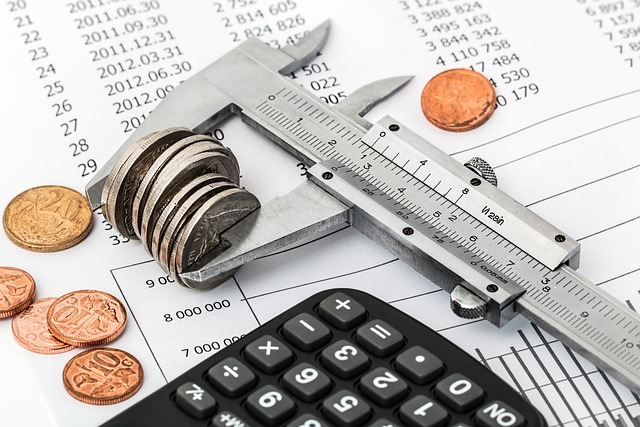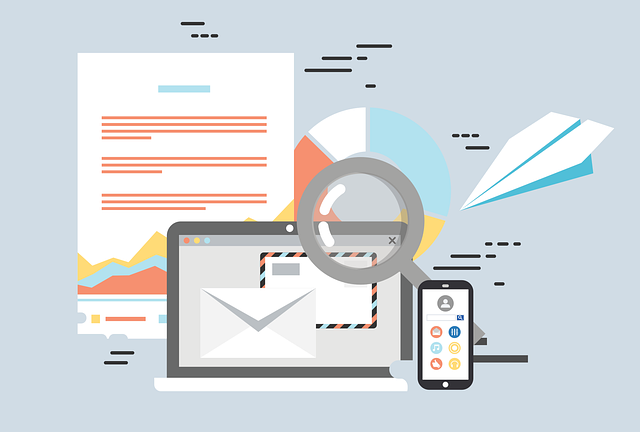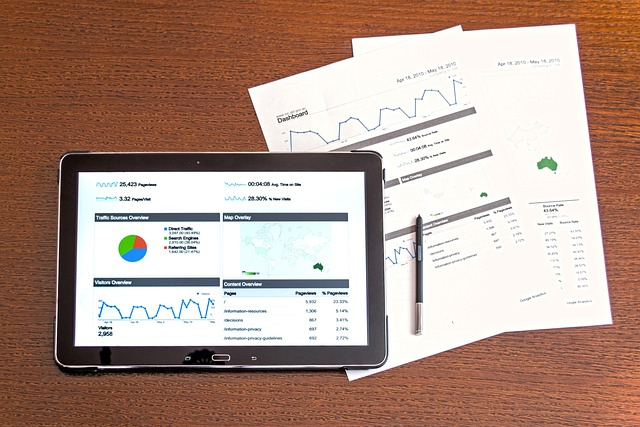We’ll increase conversions by
20-100+%
on your website.
Get a FREE Audit today
See how we can help your business increase conversion rates

Cost Per Acquisition Formula
What is Cost Per Acquisition (CPA) and Conversion Rate (CR)?
In the realm of marketing metric, there are two important concepts that are worth delving into: Cost Per Acquisition (CPA) and Conversion Rate (CR).
CPA, which is a metric that aims to quantify the marketing costs required to acquire customers procure a new customer or lead, is calculated by taking the total amount of capital spent on a marketing campaign and then dividing it by the number of new customers acquired or leads that have been garnered as a result.
CR, on the other hand, seeks to measure the proportion of website visitors who have successfully completed a desired action, be it filling out a form or making a purchase. In order to determine this metric, the number of conversions is divided by the total number of visitors to a website or landing page.
Both CPA and CR are indispensable when it comes to tracking and optimizing a business’s own marketing efforts, its marketing budget, and endeavors. It is only by taking these and other metrics into account that businesses can make informed, data-driven decisions that will allow them to achieve their marketing goals in a more effective and efficient manner.
Understanding the relationship between these two metrics, therefore, is of the utmost importance for any business that wishes to thrive in today’s competitive landscape.
Understanding the relationship between CPA and CR
It is of utmost importance for any business to grasp the interrelationship between CPA and CR if they seek to gain traction in their marketing endeavors.
An appreciation of how changes in CR can have an effect on CPA empowers businesses to arrive at informed decisions that will allow them to streamline their customer acquisition campaigns and curtail expenses.
A lower CR inevitably implies that a greater amount of cash is being expended on securing each customer, thereby leading to higher than average CPA.
However, by fine-tuning CR and augmenting the conversion funnel, businesses can succeed in decreasing their CPA while acquiring a greater number of paying customers.
Hence, the fusion between CPA and CR can endow businesses with the capability to achieve their marketing goals more effectively, thereby providing for higher marketing ROI, and a superior customer experience overall.
Cost Per Acquisition (CPA) Formula

What is cost per acquisition (CPA)?
CPA is a critical marketing measurement instrument that computes the price of acquisition or cost of securing a new customer or lead. This vital metric is attained by splitting the overall cost of the acquisition costs or cost per move of a marketing campaign by the number of fresh customers or leads secured.
For businesses seeking to scrutinize the efficacy of their various marketing efforts and pursuits, the CPA calculation is an indispensable metric. It furnishes businesses with the requisite information to assess the total cost-effectiveness of their campaigns, providing insight into how much they are shelling out to obtain each new paying customer.
CPA tracking allows businesses to make decisions guided by data to streamline their ad campaigns, and reduce expenses while at the same time amassing more customers.
As such, by vigilantly using ad spend and monitoring CPA, businesses can make decisions founded on data analytics that enable them to boost their ad spend and campaigns’ potency and achieve cost savings while gaining more customers.

How to Calculate CPA
Determining the customer acquisition cost necessitates identifying the overall cost of the marketing campaign, which encompasses all costs associated with advertising, design, and development. Once you have unravelled the cost of the total ad campaign expenditure, for example, you can then calculate cost per acquisition, and then divide that the cost per acquisition figure by the number of new customers or leads amassed via the campaign. The CPA formula reads:
CPA = Total cost of ad campaign / Number of new customers or leads acquired
Take, for instance, a scenario where your content marketing campaign cost per move totaled $10,000, and your customer or lead acquisitions were a hundred in number. Applying the CPA formula results in $100 cost per acquisition ($10,000 / 100 = $100) as the average expenditure incurred in acquiring each new customer or lead via the content marketing campaign.
Thus, the CPA represents an accurate picture of the amount, on average, that businesses are spending to acquire each new customer or lead through their sales and marketing programs, providing insight into the effectiveness and cost-effectiveness of these campaigns.

Cost per acquisition formula
Let’s say a business decided to allocate marketing budget of $5,000 on a social media ad campaign and the ad campaigns achieved 50 new customers. If we divide the total cost of the ad campaign ($5,000) by the number of new paying customers the ad was acquired (50), we get a CPA of $100. This indicates that, on average, the business invested good cost of $100 to obtain each new paying customer, through the social media ad campaign.
Another scenario could for example be a business spending $15,000 on a Google AdWords campaign that resulted in the acquisition of 150 new customers. If we divide calculate cost by the total cost per acquisition campaign and cost per acquisition ($15,000 + cost per acquisition) by the number of new customers acquired cost per acquisition, (150), we get a CPA of $100. Therefore, the business invested $100 on average to acquire each new customer through the Google AdWords campaign.
These examples demonstrate how to calculate the total cost per acquisition for different lead generation programs and how it can be employed to assess the cost-effectiveness of marketing initiatives.
By keeping a close eye on CPA, businesses can assess which ad campaigns are the most cost-effective and make informed decisions based on data to optimize their marketing efforts and achieve better outcomes.

Marketing costs
Marketing costs are a crucial aspect of any business, as they directly impact the cost per acquisition (CPA of acquisition) of acquisition of a customer. The CPA of acquisition formula takes into account all the costs associated with acquiring a customer, including the marketing costs, and divides it by the total number of customers acquired.
Thus, to reduce the CPA calculation, businesses must find ways to optimize their marketing costs while still effectively reaching and converting potential customers. This may involve experimenting with different marketing channels, targeting more specific audiences, or refining their messaging to maximize their return on investment from their marketing costs. Ultimately, striking the right balance between marketing costs and is key to the long-term success of any business.

How to Calculate Conversion Rate (CR)
What is CR?
CR metric is a pivotal element for businesses seeking to gauge the effectiveness of their website and marketing campaign. It measures the percentage of visitors who carry out the desired action on a website, such as filling out a form, subscribing to a newsletter, or purchasing a product.
CR is a reliable indicator of a website’s ability to convert visitors into leads or customers. A high conversion rate suggests that the website is successful in compelling visitors to take the desired action.
Therefore, by keeping track of the CR, businesses can take informed decisions based on data and optimize their website and marketing campaign for better results, leading to more conversions and an enhanced customer experience.

How to calculate CR
Calculating the CR for your website may seem like a daunting task, but fear not, for it is a simple process. The initial step in CR calculation requires you to accumulate the number of visitors who have successfully completed an intended action, such as making a purchase, filling out a form, or subscribing to a newsletter, for instance.
After that, the cumulative number of website visitors must be taken into account. To find the percentage of visitors who have completed the desired action, you need to divide the number of visitors who completed the desired action by the total number of website visitors and multiply it by 100.
Let’s take an example to explain this better: if your website had 10,000 visitors and 500 visitors completed the desired action, then your CR would be 5% ((500 / 10,000) x 100% = 5%). That means 5% of your website visitors completed the desired action.
CR is a key performance and cost indicator for businesses evaluating the effectiveness and cost of their website and advertising strategies. It provides critical insights into the website or ad’s ability and cost to convert visitors into customers or leads.
A high CR suggests that more visitors are taking the desired action, indicating that the website is successful in persuading visitors to take action. Monitoring CR is necessary for businesses to make data-driven decisions and optimize their website and promotional initiatives for improved results. By doing so, they can achieve more conversions and a better customer experience.

Examples of calculating CR
Suppose a business attracted 5,000 visitors to their website during same time period, and among them, 250 made a purchase. To calculate the CR, the number of visitors who completed the purchase (250) would be divided by the total number of website visitors (5,000), giving a CR of 5% ((250 / 5,000) x 100% = 5%). This suggests that 5% of the website visitors accomplished the desired click through rate action of making a purchase.
Another instance might involve a business attracting 10,000 visitors to their website, with 500 visitors filling out a form. To calculate the CR, the number of visitors who filled out the form (500) would be divided by the total number of website visitors (10,000), resulting in a CR of 5% ((500 / 10,000) x 100% = 5%). This indicates that 5% of the website visitors accomplished the desired action of filling out the form.
The illustrations put forward provide a clear-cut roadmap of the various methods to compute the CR for diverse types of desired actions on a website, ranging from the simple process of making a purchase to the more complex task of filling out a form or paying customer first. By keeping track of CR, businesses can appraise the efficacy of content marketing their website and identify areas for improvement to enhance the chances of visitors taking the desired action.
Relationship between CPA and CR
The interdependence of ad for Cost Per Acquisition (CPA) costs and ad for costs and Conversion Rate (CR) is a critical concept for businesses to grasp. A low CR for example indicates that only a small proportion of website visitors are taking the desired action, for example, such as filling out a form or making a purchase.
Consequently, a business may have to spend more on advertising to acquire each new customer, resulting in a higher CPA calculation. Conversely, a high CR implies that a significant percentage of website visitors are taking the desired action, resulting in a lower CPA calculation. Monitoring both metrics enables businesses to optimize their customer acquisition and improve the CR while lowering the CPA calculation, resulting in a more cost-effective and successful campaign.

How changes in CR affect CPA
CR and CPA are closely linked metrics that can impact the success of a business’s marketing campaign. A low CR can increase CPA because the business must spend more on advertising to acquire new customers. For instance, if a business spends $100 on advertising and acquires ten with a CR of 10%, the average CPA amount is $10.
However, if the CR decreases to 5%, the business must spend $200 on advertising to acquire the same ten customers, resulting in a CPA of $20. Conversely, a high CR can reduce CPA, making the marketing campaign more cost-effective and successful. By optimizing their website and advertising strategies to increase CR, businesses can lower their CPA and achieve success.

Examples of the impact of CR on CPA
Consider a business that has allocated a budget of $1,000 towards advertising in order to acquire customers. Let us assume that the business is able to acquire a total of 100 customers per acquisition with a conversion rate (CR) of 1%. As such, to calculate cost per acquisition, the total cost of per acquisition (CPA) for the business amounts to $10, which is derived from the total amount of money spent per acquisition on advertising divided by the number of customers acquired per acquisition.
However, should the business optimize their marketing campaign and make appropriate modifications to their website, which result in an increase of the CR to 2%, the same advertising spend of $1,000 would now enable the business to acquire 200 new customers. Such an increase would undoubtedly result in a lower CPA of $5, which is the result of dividing the total advertising spend by the number of new customers acquired.
Conversely, a decrease in CR to 0.5% would mean that the same time period the business would only acquire 50 customers for the same advertising spend of $1,000. In this scenario, the business would suffer a higher CPA of $20, which is derived to calculate cost per acquisition, by dividing the advertising spend by the number of customers acquired per time period.
These examples clearly demonstrate how changes in CR can have a significant impact on the CPA. Furthermore, it emphasizes the importance of optimizing the marketing budget and marketing roi, to increase the CR, which can ultimately result in a more cost-effective and successful ad campaign.

Optimizing CPA and CR
It cannot be denied that optimizing both the Cost Per Acquisition (CPA) and Conversion Rate (CR) is of utmost importance for businesses, as it can undoubtedly make a significant impact on the success of their marketing campaign. In order to maximize the results, it is essential for businesses to meticulously analyze their website and marketing metric in order to identify areas where the CR can be improved.
Through the painstaking process of optimization good cost of, businesses can achieve the feat of acquiring more customers for less money in the same time period and same advertising spend less money per acquisition, which in turn leads to a lower CPA. This powerful strategy of good cost optimization can lead to increased profitability for businesses, as they can calculate cost effectively generate more revenue from each customer while simultaneously minimizing the cost of acquiring them.
As a further benefit of optimizing both metrics, businesses can improve the overall efficiency and effectiveness of their various marketing efforts and campaigns, which ultimately results in a higher return on investment. By maintaining a consistent and thorough monitoring process of both CPA and CR, businesses can ensure that their marketing efforts are successful, cost-effective, and contributing significantly to their bottom line.
It is vital that businesses remain vigilant and maintain a constant level of improvement to both metrics in order to stay ahead of the competition and ensure the continued success of their sales and marketing programs.

How to Optimize CPA and CR
When it comes to optimizing Cost Per Acquisition (CPA) and Conversion Rate (CR), businesses have at their disposal an arsenal of strategies and tactics that can be employed, based on the specific marketing campaign and the goals of the business.
In the pursuit of optimizing CPA, businesses can engage in a thorough analysis of their advertising campaigns and make necessary adjustments to their targeting, messaging, and bidding strategies to reduce costs and improve their return on investment.
Additionally, they can take steps to optimize the user experience on their website, such as by simplifying the checkout process or reducing page load times, among other metrics which can increase the likelihood that visitors will convert into customers. These strategies can effectively reduce CPA and increase profitability.
To optimize CR, businesses can employ a plethora of strategies, such as improving the quality and relevance of their website content, optimizing their calls-to-action, and reducing barriers to conversion, such as lengthy forms or complicated checkout processes. By carefully implementing these strategies, businesses can effectively increase their CR, leading to a greater number of conversions and increased revenue.
In order to maximize the benefits of optimizing both CPA and CR, businesses must remain vigilant in the constant monitoring and improvement of both metrics.
This requires a level of dedication to the ongoing optimization process, as businesses must be open to continuously evolving their marketing campaigns in order to remain successful, efficient, effective, and cost-effective.
By doing so, businesses can confidently optimize their marketing roi, contributing to the overall success and profitability of their business.

Examples of Optimizing CPA and CR
Businesses can use a variety of strategies to optimize both Cost Per Acquisition (CPA) and Conversion Rate (CR), depending on the nature of their marketing campaigns and objectives.
For example, they may focus on optimizing CPA by identifying and targeting specific demographics that are more likely to convert or by reducing their bids on poorly performing keywords.
Alternatively, businesses may look to improve CR by enhancing the layout and navigation of their website, providing personalized recommendations to customers, or A/B testing various versions of their landing pages to determine the most effective approach.
Moreover, businesses can optimize both CPA and CR by implementing retargeting ad campaigns that aim to acquire new customers or bring back visitors who didn’t convert, leveraging social proof and customer reviews to establish credibility and trust to acquire new customers, and offering incentives or promotions to motivate customers to act.
By consistently experimenting and refining their marketing campaigns, businesses can optimize their CPA and CR to acquire customers and boost revenue while minimizing advertising expenses.

Factors affecting CPA and CR
Cost Per Acquisition (CPA) and Conversion Rate (CR) are critical indicators that determine the success of digital marketing campaigns. These metrics are impacted by various factors. The first factor is the target audience, where the calculate cost per acquisition of acquiring a customer can differ based on their demographic, interests, and behavior.
The second factor is the quality of the landing page, where a poorly designed landing page can lead to a lower CR. The third factor is the competitiveness of the industry, where high competition can increase the cost of acquiring a customer.
Additional factors that can affect CPA and CR include the effectiveness of the ad copy and creative, the relevance of the ad to the target audience, and the timing and frequency of the ads.
Optimizing these factors can improve a business’s CPA and CR, resulting in more effective and successful marketing campaigns. By analyzing and optimizing these and other metrics continuously, businesses can achieve better results and stay ahead of the competition.
Industry Customer Acquisition Cost Benchmarks
In the realm of digital marketing, businesses often look to industry benchmarks for Cost Per Acquisition (CPA) and Conversion Rate (CR) to assess their marketing performance.
These benchmarks vary significantly depending on the industry, with the legal industry having an average CPA of $135 and an average CR of 7.8%, the education industry having an average CPA of $42 and an average CR of 4.7%, and the automotive industry having an average CPA of $48 and an average CR of 2.2%, according to a 2021 report by WordStream.
Analyzing and benchmarking against industry standards can provide businesses with critical insights into their marketing strategies, allowing them to adjust their campaigns and maximize their effectiveness.

Customer lifetime value
Customer lifetime value is a crucial metric for any business that wants to understand the long-term profitability of its customer base. By measuring customer lifetime value as the total revenue a customer is expected to generate over the course of their relationship with a company, businesses can make more informed decisions about how much they are willing to spend to acquire new customers.
This is where the cost per acquisition formula comes into play, as it allows businesses to determine the average amount they are spending to acquire each new customer. By using calculate cost per customer acquisition cost formula and comparing this figure to the estimated customer lifetime value, businesses can determine whether they are spending too much or too little to acquire new customers.
Ultimately, the goal is to maximize customer lifetime value per acquisition while keeping total cost of per acquisition as low as possible. When businesses focus on increasing customer lifetime value per acquisition and good cost through, they are investing in the long-term success of their company and creating a sustainable path for growth.

Summary
This comprehensive article has covered the fundamentals of two key marketing metrics: Cost Per Acquisition (CPA) and Conversion Rate (CR). It has delved into the importance of these metrics, with clear explanations on how to calculate them, as well as real-world examples that demonstrate how optimizing them can enhance business profitability.
Additionally, the article has explored the interdependence of CPA and CR, highlighting the significance of optimizing both to boost the efficacy of the marketing metric. The article has provided actionable strategies for enhancing CPA and CR, such as refining targeting, messaging, and calls-to-action. Overall, this article underscores the importance of comprehending and optimizing these metrics to increase ROI and maximize revenue generation while minimizing ad spend.
The importance of understanding and optimizing CPA and CR.
Businesses striving to thrive in today’s competitive marketplace must master the art of optimizing Cost Per Acquisition (CPA) and Conversion Rate (CR). These metrics are essential in measuring marketing campaign efficiency and effectiveness and can inform data-driven decisions that lead to better outcomes.
By enhancing both CPA and CR, businesses can boost revenue, profitability, and return on investment. In a world where capturing consumer attention and spending is increasingly difficult, CPA and CR optimization can be the differentiator that sets businesses apart. Constantly tracking and optimizing CPA and CR is the key to staying competitive and profitable in today’s market.

Read more informative articles like this on our Conversion Rate Optimization focused blog.








